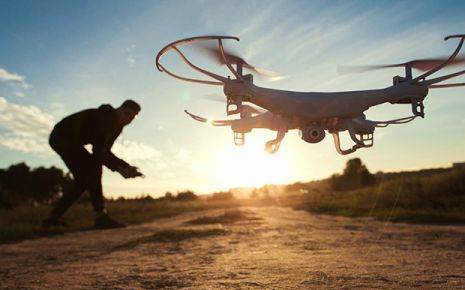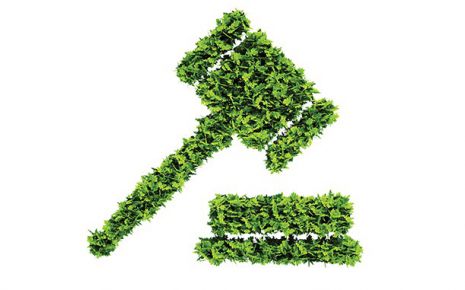The Reliability of Forensic Sciences
Forensic science is the employment of scientific discipline and technology in
the field of civil and criminal laws. Essentially this field of science
propounds various standards, regulations and guidelines in regard of the
permissibility of evidence in both criminal and civil procedures.
For years now, the movies and media have created a huge misconception about the
role of forensics in criminal investigations. These fictional TV shows and
movies portray unrealistic competence of forensic science. In contrast, in the
real world not all forensic evidence is aided up by meticulous scientific
investigation implying that it doesn’t always indicate towards the person who is
guilty. Although forensic science possesses incredible capability to identify,
investigate and litigate crime however any strong medicine can have side effects
if given to the wrong patient. This paper will offer an analysis of forensic
tools that distinguishes between tools that could be relied on and those that
miss the mark:
DNA Analysis is the standard
Alec Jeffreys, a British geneticist in 1984 uncovered DNA fingerprinting which is the most crucial forensic tool of our times. Examining and interpretation of DNA fingerprinting has been recognized as the most reliable tool of forensic science today. However, it had to undergo extensive experimentation and validation before it was recognized as a reliable tool. It has been successfully used as a tool to point out the perpetrator of a crime, to identify the lineage of the crime and exempt the people who are wrongfully convicted.
Fingerprints may not always be true
Sir William Herschel was among the first to lawyer the use of fingerprinting in tracing down the criminal suspects.For decades fingerprints, palm prints and sole prints, collectively known as “friction ridge analysis” have been used as evidence in forensic science. Fingerprint analysis involves comparing the details of an unknown print to a data bank of known prints. Criminologists profess that it possible for the examiners to identify fingerprint and trace it back to a single unambiguous source. Criminologists swear that fingerprint identification is impeccable and therefore the most reliable tool in forensic science.
Recently the reliability of fingerprints to be used as forensic evidence has also been put under question due to the errors made while identifying the fingerprints. As per the National Academy of Science, fingerprint analysis is based on an assumption that all fingerprints are unique but peer researchers have not adequately critiqued it. Additionally, a recent study shows that fingerprint examiners are prone to making contextual bias while comparing fingerprints. Due to these fallbacks experts cannot any longer testify to a zero error rate for fingerprints in the courts.
Sometimes Bite Marks Bite Back
Bite mark is among the most questionable forensic tool. Bite marks cannot be relied upon as the bite mark may change over the course of time or may be deformed due to swelling or curing of the bite. Just like the fingerprint analysis, bite mark analysis operates on the assumption that every individual has unique dental characteristics, which is not sufficiently scientifically scrutinized. Counselor for pro bono cases say that the insufficiency of research supporting bite mark comparison has contributed in many wrongful convictions over the years.
Firearms, Bullets and Ballistic Identification
A forensic examiner studies the trajectory of the bullets when there is a shot fired in the crime scene. The examiner then tracks down the direction from which the bullet came and the firearm used in the crime scene. Although there might be a conjecture that firearm related marks may be a subject to several sources of variability, they are not completely random and volatile. One can detect similar marks on bullets and cartridge cases from the same gun. Yet again, the assumption of singularity and non-reproducibility of firearms related marks has not been fully studied. Lastly, there’s a need to scientifically establish the degree of uniqueness of the firearm related marks.
Matching Hair analysis needs research
Forensic hair examiners have deposed that physical characteristics of hair can be recognized and they can be used to identify the presence, absence of specific individual at a crime scene. There is a lack of proper scientifically proven statistics that measures the frequency with which a particular characteristic of hair is distributed in the population. There’s also no uniform standard on the number of matching features that must be present to testify a sample as a match. According to a recent study, microscopic hair analysis is not yet an accurate science, thus deciding a case on hair and fiber analysis may lead to wrongful convictions.
Drug Testing is backed by Solid Science
Drug testing is also known as forensic technology. Forensic technology is the use of toxicology and other disciplines such as analytical chemistry, pharmacology and clinical chemistry to help legal investigation. The most commonly used forensic tool is drug testing in which biological samples are examined to check the presence of toxins in an individual to ascertain if it is beyond the harmful level. It is then utilized to interpret the reasons for an individual’s death, sickness and mental or physical ailment. Similar to DNA analysis, the study of controlled drugs is a precise science in the lines of strong analytical chemistry. However, there exists a probability of uncertainties and potential errors while examining the controlled substances due to exhaustive scientific testing.
Forensic evidence is circumstantial evidence, this means it requires interpretation, and its presence doesn’t necessarily prove guilt. Forensic evidence may be used as a part of the case to prove guilt but it cannot be used as the whole case. Forensic evidence alone cannot be used to establish guilt. Forensic laws involve chemistry and its role in our judicial system is increasing. These forensic science techniques used are fallible and therefore require more scientific research to increase the weight of reliability of such evidence in the courts.
Law Article in India
Legal Question & Answers
Lawyers in India - Search By City
LawArticles
How To File For Mutual Divorce In Delhi

How To File For Mutual Divorce In Delhi Mutual Consent Divorce is the Simplest Way to Obtain a D...
Increased Age For Girls Marriage

It is hoped that the Prohibition of Child Marriage (Amendment) Bill, 2021, which intends to inc...
Facade of Social Media

One may very easily get absorbed in the lives of others as one scrolls through a Facebook news ...
Section 482 CrPc - Quashing Of FIR: Guid...

The Inherent power under Section 482 in The Code Of Criminal Procedure, 1973 (37th Chapter of t...
The Uniform Civil Code (UCC) in India: A...

The Uniform Civil Code (UCC) is a concept that proposes the unification of personal laws across...
Role Of Artificial Intelligence In Legal...

Artificial intelligence (AI) is revolutionizing various sectors of the economy, and the legal i...








Please Drop Your Comments